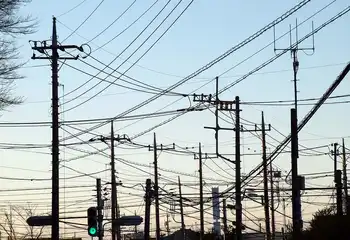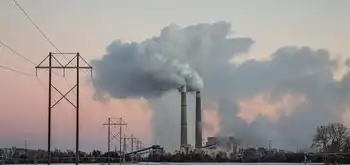With vast reserves, Montana eyes coal expansion
By Reuters
Arc Flash Training CSA Z462 - Electrical Safety Essentials
Our customized live online or in‑person group training can be delivered to your staff at your location.

- Live Online
- 6 hours Instructor-led
- Group Training Available
Many say a big boost to Montana coal production can only follow November's national election, when a new president could lead the way in clarifying environmental laws and encouraging cleaner coal technology. Montana ends the long U.S. state-by-state presidential primary process.
"Nothing is going to happen until we have a carbon law, that's the bottom line," Montana Gov. Brian Schweitzer told Reuters. "It needs a new president."
"But what's happening right now is the partnerships are being formed, the capital is being raised, the coal is being acquired, so everybody is ready to move as soon as we have a carbon law."
The state produced 43.4 million tons of coal in 2007, up 3.7 percent on the year, the biggest growth rate of any state. That output is just a tenth of that in neighboring Wyoming, where coal is generally easier to extract and transport.
Yet Montana, which borders Canada, sits on America's greatest coal reserves: 120 billion tons, worth about $1.5 trillion at current prices, according to Jay Gunderson, a research geologist at the Montana Bureau of Mines and Geology.
"Coal demand is up all over the world," said John O'Laughlin, Westmoreland Coal Company's vice president, coal operations. "With the price for a barrel of oil, there's a lot of interest in Montana coal. But we've got to figure out a way to sequester the CO2. That's what is holding us back."
The company's 34-year-old Absaloka mine in southeast Montana reached a record 7.35 million tons output last year. In 2009, it plans to expand into adjacent Crow Indian reservation land for the first time.
All the presidential candidates back an expansion of some form of coal using more environmentally friendly technology.
"We're sitting on the world's largest supply of energy in our coal resources," presumed Republican nominee Sen. John McCain said recently. "That has to be one of the fundamental components of energy independence."
Among the Democrats, Sen. Barack Obama has said he would increase resources for commercialization and development of low-emission coal plants, and Sen. Hillary Clinton has called on industry to implement clean coal technology.
"It has been kind of refreshing to hear Hillary and Obama talk about clean coal," Westmoreland's O'Laughlin said. "There is at least a glimmer of acceptance."
Montana has not opened a new coal mine in decades.
"Companies are reluctant to invest billions of dollars in infrastructure not knowing what the government is going to do about CO2," said Gunderson at the Bureau of Mines and Geology.
At Absaloka, a single machine - a dragline excavator that scoops out slabs of rolling countryside to get near the coal - costs $120 million. Elsewhere, workers dynamite sections of earth and expensive trucks with wheels taller than people carry away coal to be crushed in a vast facility before transport.
Great Northern Properties is the largest private holder of U.S. coal reserves with 20 billion tons, mostly in Montana and North Dakota. Chuck Kerr, president of the Houston-based company, said the nation will eventually tap Montana's coal.
"It's not a matter of if, it's a matter of when," he said in an interview. "The silent majority back coal development because it's a very cheap source of fuel."
Gov. Schweitzer has long championed Fischer-Tropsch technology to convert coal into liquid fuels that can be burned in a greener way than traditional coal, but no one has yet invested the many billions needed for such a plant.
"It is incredibly expensive to deploy," Kerr said.
But there are signs of other new projects.
John DeMichiei, president and CEO of Bull Mountain Coal Mining Inc, expects to get private financing by July 15 for what he said could be the largest underground coal mine in the world, located 35 miles north of Billings, Montana.
"It takes extreme capital investment," he said. "With these sales prices starting to at least support this type of capital investment, I think you will see more investment in Montana in terms of coal."
DeMichiei hopes to begin large-scale production at Bull Mountain by September 2009, with production of 14 million tons a year. The mine, with 430 million tons in reserve, now produces just 40,000 tons a month, he said in an interview.
The company's main investor is Airlie Group of Greenwich, Connecticut. "We are in discussions with a number of parties to get the mine fully financed and build a railroad and get it to be one of the largest long wall mines in the United States, if not the largest," Airlie Managing Director Andy Dwyer said.
But he added: Wyoming's "Powder River Basin has established rail lines and transportation hubs and the ability to substantially expand. So if there isn't going to be any substantial increase in demand then quite frankly the Powder River Basin can meet a good deal of that demand."
Schweitzer said despite its greater reserves and plans for expansion, Montana may never surpass Wyoming in production. "The world of hydrocarbons will be over and we'll still have 90 percent of our coal in the ground," he predicted.
"Wind and solar and hydrogen - they'll be the energy sources of the future. Forty, 50 years from now hydrocarbons won't be an energy source of any large quality."











